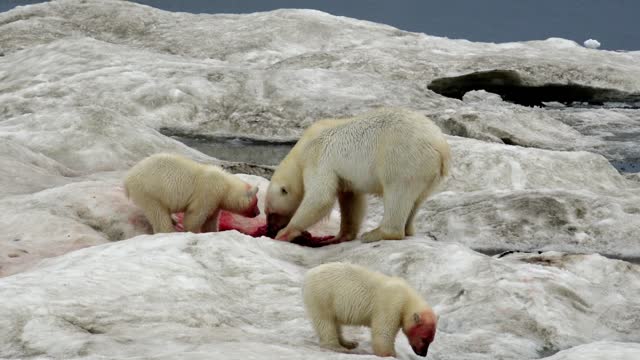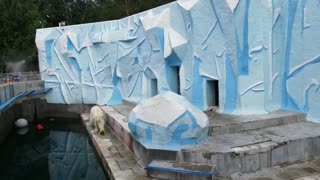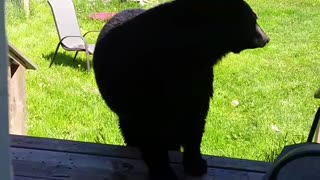Premium Only Content

Polar Bear and Cubs Eating Walrus
Occurred on July 30, 2018 / Wrangel Island, Chukotka, Russia
Info from Licensor: "The bears looked healthy and well-fed. They were completely unconcerned by our presence and we were able to stay with them for more than an hour.
The Polar Bear (Ursus maritimus) is the iconic species of the Arctic. They are normally found near the floe edge where they hunt seals most notably Ringed Seals. On this trip, we found several bears on Walrus kills and saw very few seals. Polar Bears will also take Beluga Whales and Narwhal. Males can reach up to 800kg and stand up to 1.5m at the shoulder. The fur is made up of a thick underfur up to 5cm long with guard hairs that can reach 15cm in length. These hairs are hollow thereby increasing their insulating properties. Beneath the skin is a thick layer of blubber up to 15cm thick. Polar Bears stroll across the ice at a leisurely 4km/hr - any faster and they get too hot. When needed they can run in short bursts at 40km/hr. Polar bears are adept swimmers reaching up to 3km/hr and can swim very long distances.
Polar Bear mating occurs in the spring and early summer. Ovulation needs to be induced by several matings over a few days. Implantation of the blastocyst is delayed until late autumn. The female digs a snow den in which 1-3 cubs are born (although two is the norm). They weigh just 600g at birth. The mother may lose up to 50% of her body weight as she feeds the cubs. Mothers and cubs emerge from the den in March or April when there is an abundance of Ringed Seal pups. Cubs stay with their mother for about 30 months."
-
 1:34
1:34
SethLaVine
4 years ago $0.05 earnedWyoming Polar Bear
2291 -
 1:48
1:48
ncutaia101
4 years agoTrump polar Bear Swim
73 -
 2:06
2:06
HSWCoreScienceTechnology
5 years agoFrozen Planet: Newborn Polar Bear Cubs
414 -
 3:14
3:14
Pozzy
4 years agoPolar Bear beach
721 -
 0:36
0:36
Welcome
4 years agoBig polar bear at the zoo.
77 -
 0:05
0:05
Trail Cam capturing deer and other wildlife
4 years ago $0.14 earnedBlack Bear Cubs
5781 -
 3:19
3:19
SethLaVine
4 years ago $0.01 earnedWyoming Polar Bear with Squeaky Ball
58 -
 0:55
0:55
System
4 years agoPolar bear on the Yamal Peninsula
1651 -
 3:09
3:09
ViralHog
4 years agoKnown Black Bear Eating Cookies From Her Hand
114 -
 0:55
0:55
BeBalu
4 years ago $0.01 earnedBirds eating
1481